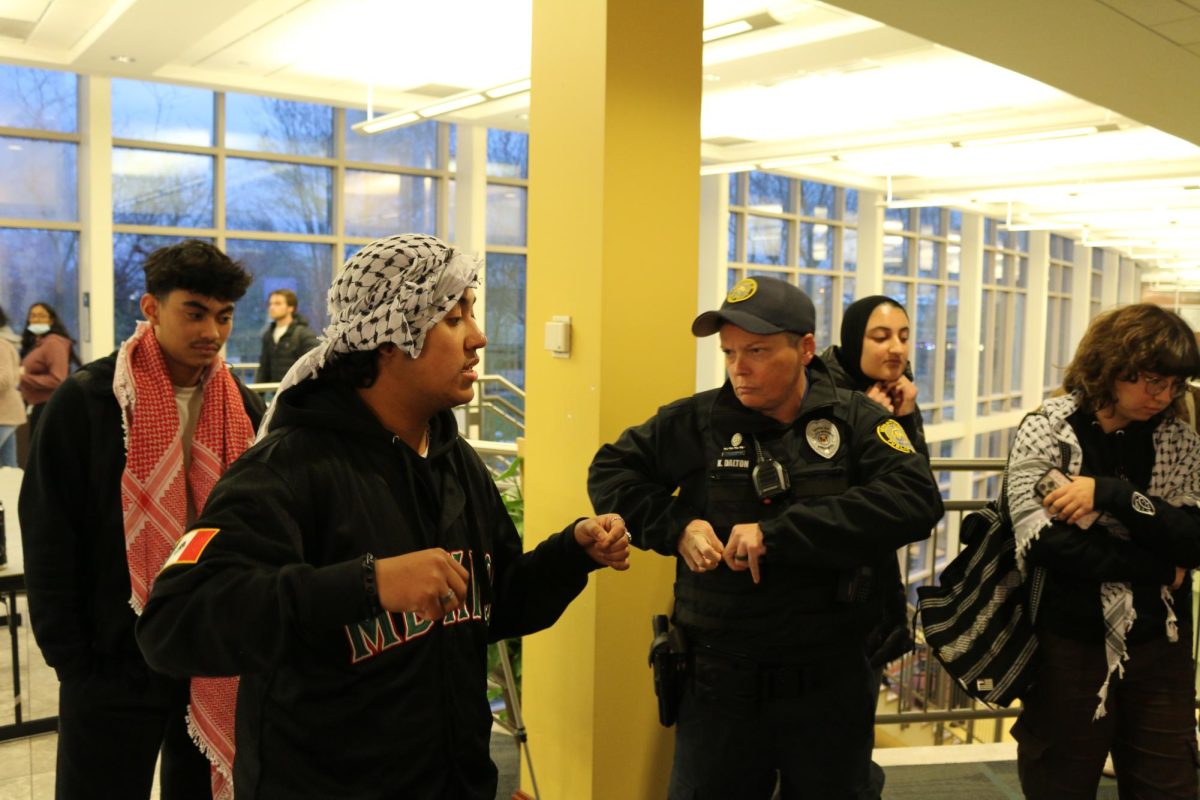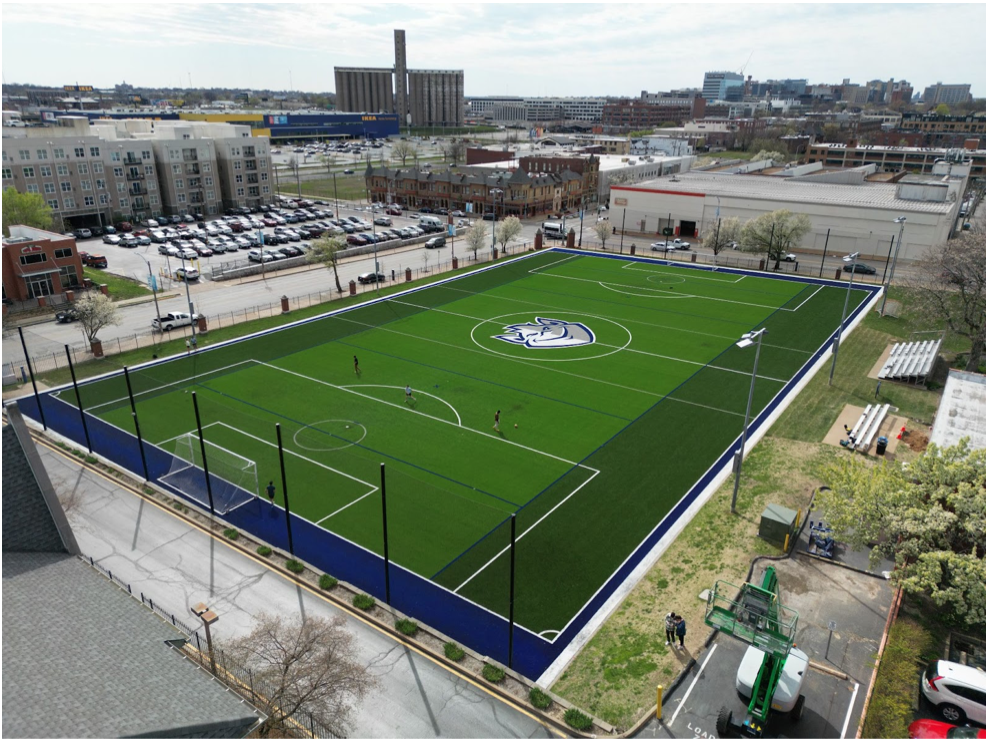Nearly two years after the first public mention of Saint Louis
University’s intent to build a medical research building, detailed
plans for the $80 million endeavor were released yesterday.
“The new research building will allow us to recruit and retain
the very best scientists (and) faculty in research,” said Dr.
Patricia Monteleone, dean of the School of Medicine. “It will also
give us the opportunity to do more collaboration between scientists
and for disciplines to interact.”
The building will be located on the Health Sciences campus.
Grand Boulevard, Chouteau Avenue and Caroline Mall border the site.
The architecture of the building, which is designed by George
Nikolajevich of Cannon Design, features 10 stories of glass and
brick and a covered walkway that leads to the school of
medicine–206,000-square-feet in all.
“We’re looking forward to the research building as a futuristic
development of discourse in the Health Sciences Center,” said Bob
Webster Ph.D., associate provost for research.
The University is still in negotiations to buy two pieces of
property on the proposed site–from Peerless Restaurant Supplies
and Sterling Lacquer Manufacturing. Webster called the negotiations
“serious.”
The location of the building was determined partially by what
lies beneath it: Most of the nine-acre site sits atop a 175-foot
deep quarry.
Webster said that the earth beneath the building site is solid,
but the quarry forced the building plans north, away from the
Caroline Mall. A grove of trees will lie south of the building and
a fountain to its north.
A date for groundbreaking for the project has not been set. The
administration has determined that $22.5 million must be secured
before construction will begin. Renovations to current facilities
in the medical school account for $16 million of the project
proposal, with the remaining $64 million allocated for the new
building.
Funding for the project will come from both federal and private
sources, as SLU plans to raise $13 million in gifts, $12.5 million
from federal grants, and to take the remaining $54.5 million in
debt. During the first 10 years, SLU plans to cover $20 million of
that debt with funds from the annual budget. After that, the budget
will contribute $1 million per year.
Money for research projects will not be as hard to come by,
however, once the building is complete as SLU will vie more
successfully for both federal and private funding for research,
Monteleone said. The building will attract higher caliber faculty,
and the facilities will accommodate a larger range of research
endeavors, which are key when applying for funding, she said.
The facilities are meant to be easily adaptable for any type of
research, but the focuses at the outset will be cancer,
cardiovascular and pulmonary diseases, infectious diseases, liver
diseases and neuroscience, which are well established programs at
SLU.
“It will be cutting edge in terms of equipment, systems and
different efficiencies,” Monteleone said. added.
As well as attracting better faculty, the building will draw and
cater to the many graduate students who conduct research. “Graduate
students in basic sciences are a critical part of research, and
they will be conducting research with their faculty mentors in the
building,” Monteleone said. Medical, nursing, and allied health
students will have opportunities to work in the building as
well.
“The new building will afford better means of interactivity”
among faculty and students, said William Wold, chair of the
department of molecular microbiology and immunology. A graduate
student’s career is about conducting research and learning to
conduct individual research, Wold said. The new faculty that the
building will attract to the University will “approve the student’s
life accordingly,” he said.
“I think it’s about time,” said Tony Nuara, a second year
graduate student in the molecular virology program. Nuara studied
at the University of Arizona, where he observed “a lot of
state-of-the-art research buildings.” He commented that experience
in research is essential for undergraduate students who want to get
into medical or graduate school.
Several undergraduate students currently hold work-study
positions assisting with research on the Health Sciences Center.
These students will have the opportunity to move into the building
with those researchers, but most undergraduate students who conduct
research will continue to do so on the Frost campus. Richard
Mayden, Ph.D., chair of the biology department, explained that the
biology and chemistry programs have strong, renowned research
programs that include undergraduate assistance and collaboration.
The research facilities on Frost are on the slate for possible
renovations, and Macelwane Hall’s laboratories were renovated last
summer. Further renovations would allow for more faculty members to
apply for grants, which could allow undergraduate students to
participate in more research, Mayden said.
Webster said that faculty from the Frost campus will be invited
to collaborate with researchers in the new building and will have
access to major pieces of equipment and core facilities.





